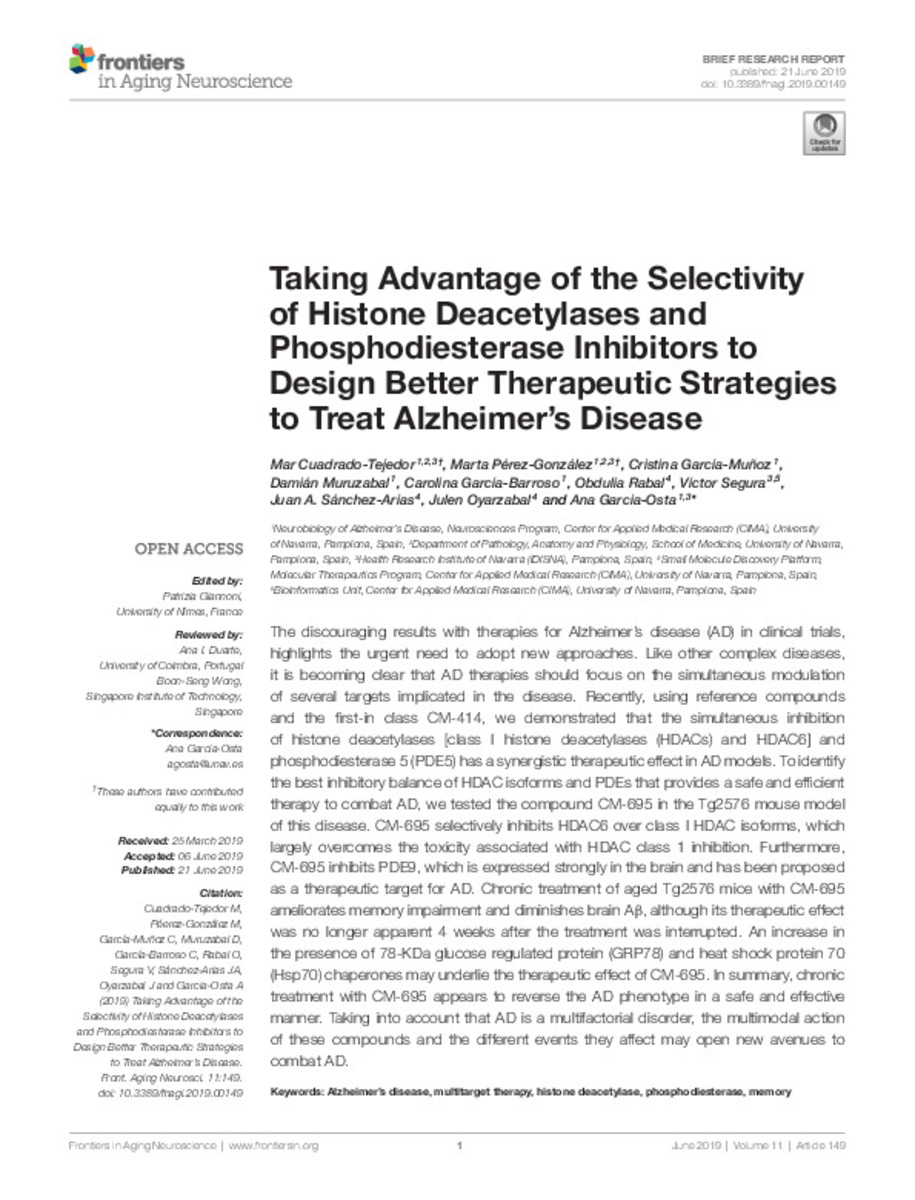Taking advantage of the selectivity of histone deacetylases and phosphodiesterase inhibitors to design better therapeutic strategies to treat alzheimer’s disease
Keywords:
Alzheimer’s disease
Multitarget therapy
Histone deacetylase
Phosphodiesterase
Memory
Publisher:
Frontiers Media SA
Note:
This
is an open-access article distributed under the terms of the Creative Commons
Attribution License (CC BY). The use, distribution or reproduction in other forums
is permitted, provided the original author(s) and the copyright owner(s) are credited
and that the original publication in this journal is cited, in accordance with accepted
academic practice. No use, distribution or reproduction is permitted which does not
comply with these terms.
Citation:
Cuadrado-Tejedor, M. (Mar); Pérez-González, M. (Marta); García-Muñoz, C. (Cristina); et al. "Taking advantage of the selectivity of histone deacetylases and phosphodiesterase inhibitors to design better therapeutic strategies to treat alzheimer’s disease". Frontiers in Aging Neuroscience. 11 (149), 2019,
Statistics and impact
0 citas en

0 citas en

Items in Dadun are protected by copyright, with all rights reserved, unless otherwise indicated.








